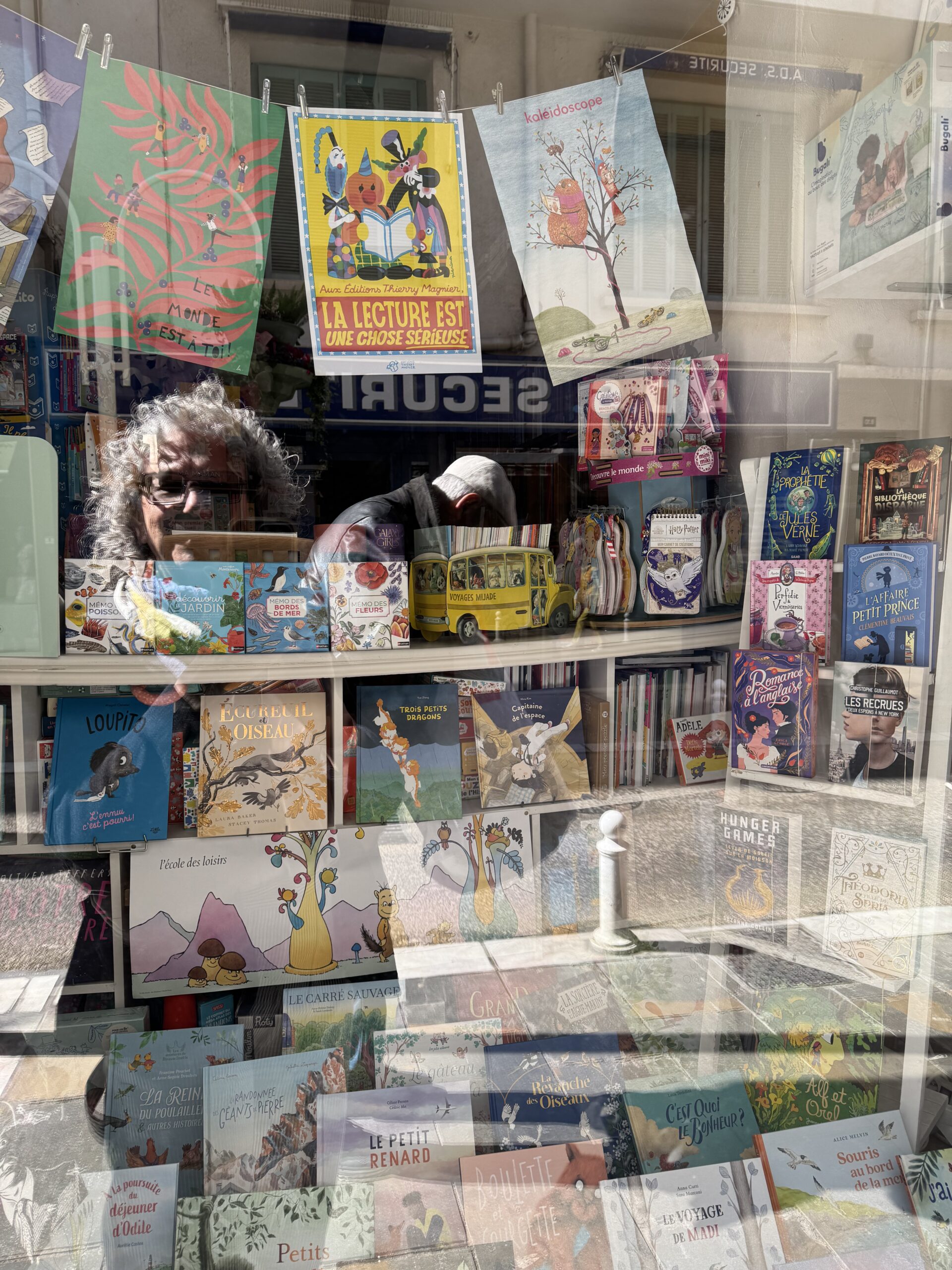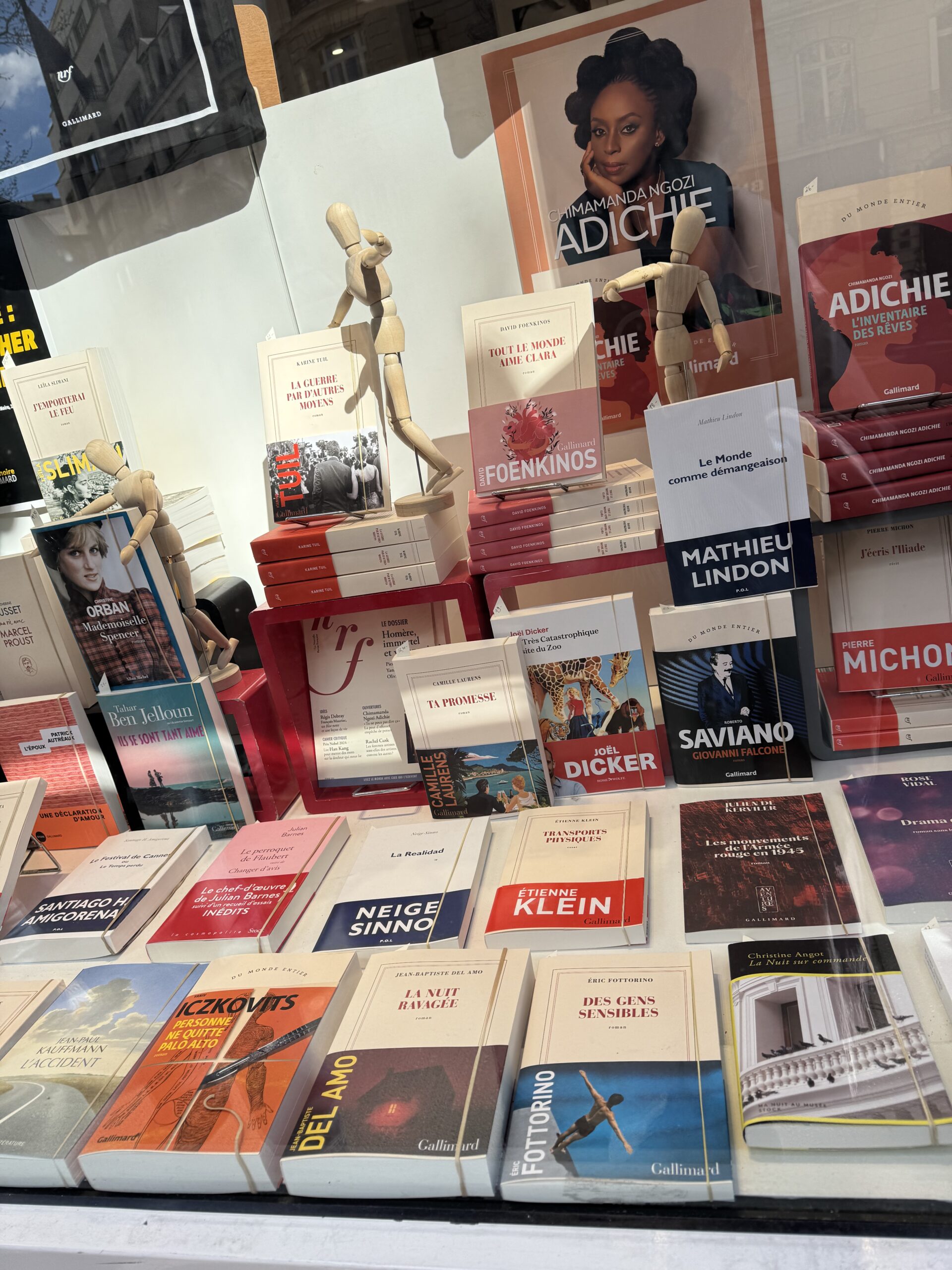I’ve been away from home for over a month now, having spent time in Paris with a daughter and granddaughter, then with a friend in Paris and Reims, then Paul joined me and we traveled to Toulon, and from there took a ferry to Sardinia where we hiked for a week. Then another ferry and a train ride to Rome to meet up with our ex-pats and head to Albania where we’re now mid-visit. Honestly, I have been too tired and my days too full to do as much reading as I generally do. But I have a few books to tell you about, and then I hope you’ll recommend a few for all of us.

I’m also posting less than usual on Instagram (partly busy, partly just feeling ambivalent about the platform right now), and sadly, yes, much less here. I have managed to maintain a weekly (Sunday) post on Substack, and I hope to write a bit about my decision to be there and about my plans for the blog, my hopes for this community. But that won’t happen until after I get back home at the end of the month.
Meanwhile. . .
I say this every book post now, for those who are new here and as a reminder to regular readers: As usual, the numbering comes from my annual handwritten reading journal, and the italicized text below is directly transcribed from that journal’s pages (once upon a time, I simply included photographs of those pages, but too many of you found my handwriting tough to decipher, especially in the photographed format). Notes to myself, that is, so that I can remember a book and remember my response to it, rather than any attempt at a more polished, edited review.
I’ve used regular font for any additions to my journal notes and included references to any posts from my Instagram Reading account.
14. L’ultima Anguàna. Umberto Matino. Mystery/Giallo; Historical fiction; Read in Italian; Setting Trentino-Alto Aldige.
I read this hoping to get to Italian Book Club for discussion, but then had a colonoscopy scheduled that week. . .
Set in small mountain villages of Trentino Alto Aldige, mid-20th century. Two story-lines (and then as denouément begins, a 3rd earlier story-line is introduced) — history, fairy tales, and legends mix it up here.
Three kids in the summer of ’56 whose parents have to work so the kids are spending their vacation in a small mountain village (in the care of a woman who the parents’ friends have recommended). Left to wander freely in the woods and hills, to make friends with the locals, they make some intriguing discoveries and keep a few secrets. . .
And then all three are lost in a storm, found dead a day or two after flooding lessens.
Twelve years later Brigadiere Baldelli is asked to solve a crime in the same region and (having been involved in the search for the three children that stormy night) becomes convinced the two incidents are connected . . . and it all goes back to events that happened during the fascist years.
Great characters, so much local lore, dialect, the geographic setting reflected in the culture. I wish there were an English translation to share, but if it exists, I haven’t found it listed anywhere.

15. Roman Year: A Memoir. André Aciman. Memoir; Coming-of-Age; Mid-20th-century Rome; Refugee memoir; Italian-American writer; Exodus from Egypt.
I hadn’t read anything by Andrè Aciman before this (chose the book because I spend a fair bit of time in Rome!) — but his Call Me by Your Name was very popular and also critically well received, won several prizes, etc., and was made into a film.
I’ve copied some favourite passages into the back of my reading journal. I really enjoyed this memoir and now want to read his Out of Egypt memoir.
Passages I especially enjoyed:
Our young and stunning waitress was very pleased to speak in Greek, said she came from Rhodes and had learned to speak a variety of languages as a child, most notably French and some Turkish. On hearing that she could speak Turkish, both my father and Aunt Elsa moved from Greek to fluent Turkish. She was so pleased to shuttle between both tongues that she told us she also spoke Spanish. Then my father took a wild guess, “must be Jewish, then?” How did you know? “Because we come from the same stock.” At which all of us laughed. She offered us a bottle of retsina on the house. I had never liked retsina before, but on that night, I adored it. Then came the skewered meats, the rice, the aubergines and other fried vegetables, with their succulent sauces and so many “friandises” as the waitress called them, that by dessert and after finishing the whole bottle of wine, we were all three very happy. The waitress handed my father the check, but she did so with the impish grace of someone who pretends to have almost forgotten. (287)
And here’s another:
What I liked about some of these people was that, despite their wealth, which was so apparent in their furniture, their clothes, their hospitality, even in their heedless, debonair manner, they spoke Italian with a distinctive Roman accent. It made me realize that Romanaccio was not just a patois spoken by poor, uneducated people working in the market-place or yammering on crowded public buses, but a language that suddenly acquired a stylish, patrician panache.” (64)
He writes also of Madame Renato who spoke Italian
with words and expressions borrowed from every other language, though she knew none well enough to claim it as hers. Her mother tongue was no language but a hodgepodge of at least four that borrowed the imperfect from one language and grafted it to the conditional of another with an ease that verged on syntactic “sprezzatura.” (41)
And this, about his grandmother, and of the value of the ordinary:
What I loved about my grandmother was that she taught me about myself: that I loved laughter above so many things, that a room with a slice of cake and the residual scent of orange blossom, a fatuous conversation, be it even gossip of the most fallow sort, was of an order no less essential than those grand ideas I was struggling to master and bring into my life. Hers was a tame love, like Flora’s, not the savage, mutinous, hysterical kind I’d grown up with and wished to be rid of, all the while knowing that I couldn’t live without it. My mother’s love was obstinate, feral, while my grandmother’s was a mitigated, almost civil, cordial love that never drained the heart but didn’t necessarily fill it either. Her love was restful and composed and always measured, even rational, hence a touch skimmed. There was always hope when my grandmother was around. Hope was good enough. (166-167)
16. Les Oubliés du Dimanche. Valérie Perrin. French novel; popular fiction; domestic fiction; coming-of-age; family secrets; cross-generational friendship; lives of the elderly.
A young woman, raised by her grandparents along with her cousin after their parents (twin brothers and their wives) were killed in a car accident, seems to be stalled in her life. Justine has a desultory sexual relationship with someone whose name she claims not to know, who seems to like her and to treat her well, but whom she keeps at a distance except for semi-regular “sleepovers.”
She’s invested the most engagement in one of the elderly women she cares for in a Home for the Aged. And Perrin uses a structure similar to that of her earlier works to interweave 96-year-old Hélène Hel’s story with Justine’s. Listening to her favourite patient, Justine records Hélène’s love story — and its disruption by WWII — in a blue notebook. And she meets the young (and very attractive) man whom she believes to be Hélène’s grandson.
Once again, Perrin creates convincing connections across generations — and once again, there is a mystery to be untangled. Yes, accusations of sentimentality could be made — Heller McAlpine calls it a “pain au chocolat” of a book. “flaky but buttery, with a sweet center” — but there are strong, interesting characters, some compelling moral quandaries, and a mystery folded into that “sweet center.”
I read it in French — to boost my language skills while in France — but it’s available in an English translation as Forgotten on Sunday.

17. Mémoire de Fille. Annie Ernaux. French literature; Auto-fiction; Coming-of-Age; Women’s Sexuality; Abuse/Coercion/Shame; Nobel prize-winning writer; French writer; Feminist writer; Women’s History; How to Write our Younger Selves.
I found so much in this slim self-titled memoir that resonated with my own story, although the young woman Ernaux’s narrator (her retrospective older self, the writing “I”) was 18 in 1958 when the pivotal events take place — so 13 years older than I was. The distance from that young woman — so much so that Ernaux uses different voices for her narrating self and her remembering self — “I” and “she.”
Working through the pain, shame, defiance, denial, pride, etc. around her entry into her own sexuality (exploited, abused, mocked, then eventually, if tentatively, claimed) that have been blocked for decades — and that prove to have been an engine of creativity and a push towards an intellectual home in feminist thinking , after an education in which she excelled but which relegated her to a confusing sort of agency,
I think of my own years from 18-20, the intellectual journey that connected very much with gender and sexuality and that I negotiated mostly alone except for naïve reading that I’m nonetheless grateful for.
That will have to do for now. . . my Instagram post here.
But I highly recommend this book — available in English (translated by Alison L. Strayer) as A Girl’s Story. I know some of you have already read it, and I’d love to know what you thought of it, what it evoked for you.
That’s it for this month’s book post. I need to go read a few pages of my current book so that I have something to tell you about next month!
But first, perhaps you can catch me up with yours in the Comments section below. (And I’d also love to see you over at my Substack account where I’ve posted a bit about my current travels.)
from southern coastal Albania where there are views like this from tough hikes . . .
xo,
f

Hello I have been following g your post for several years
My husband and I are traveling g to Italy in two weeks
Do you have a book recommendation that is set in Italy, with a possible art theme
Thanks
Author
I spent a bit of time looking through my annual book list posts to find a few titles for you. Many more on those lists — if you’d like to browse, here’s a link to the lot of them: . But for now, I’d suggest Sarah Winman’s Still Life, Frances Mayes’ Women in Sunlight and Tom Rachman’s The Italian Teacher. So many mystery series. . . For memoirs, Kamin Mohammadi’s memoir La Bella Figura:How to Live, Love, and Eat the Italian Way, perhaps Hisham Matar’s memoir A Month in Siena, Diana Athill’s A Florence Diary.